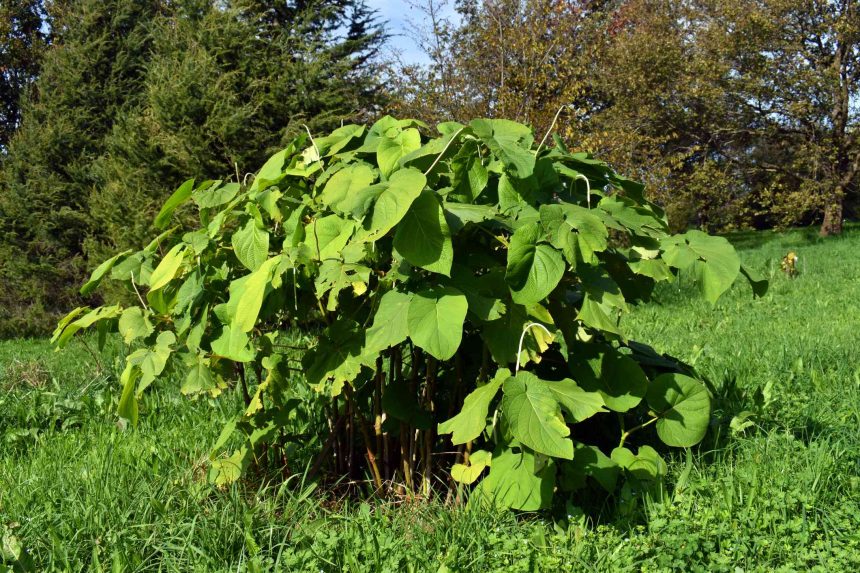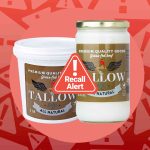| Botanical Name | Piper auritum |
| Common Name | Root Beer Plant, Hojo Santa, Mexican Pepperleaf |
| Plant Type | Perennial shrub or small tree |
| Sun Exposure | Full shade to part sun |
| Hardiness Zones | USDA 8 to 11 |
Where to Plant
Plant outdoors to receive morning sun. It has high water needs, so easy access to a water source is helpful. A sheltered spot prevents wind damage to long, thin stems and large leaves.
This plant thrives in wetlands and along woodland edges with dappled light. Use it as a low-growing border to brighten shady spots in tropical gardens and along walkways where you can enjoy its fragrance. It adapts well to average household conditions as a houseplant.
Root beer plant spreads aggressively through rhizomes and seed distribution. It requires plenty of moisture so maintain dry soil in areas to discourage spread. Raised beds and containers are additional methods to prevent unwanted spread.
Want more gardening tips? Sign up for our free gardening newsletter for our best growing tips, troubleshooting hacks, and more!
When and How to Plant
Root beer plant is most often purchased as a seedling from specialty garden shops and nurseries. It grows easily from seed which may be difficult to locate. Spring planting is recommended to allow time for establishing before cooler weather sets in.
Work compost into the planting bed and dig a hole just deep enough to accommodate the root ball. Loosen the soil around the insides of the hole then set your plant and backfill.
Add a 2- to 3-inch layer of mulch to retain soil moisture. For container growing, choose a well-draining potting mix with sphagnum moss.
Start seeds indoors four to six weeks before the final frost or direct sow after the frost has passed. Sprinkle seeds on soil or potting mix and lightly press in.
They need light exposure to germinate. Once two to four sets of true leaves appear, thin outdoor seedlings 9 to 12 inches apart or pot them up individually for transplanting outdoors after temperatures warm.
Root Beer Plant Care
Light
Root beer plant thrives in dappled light. It will grow in conditions from full shade to full sun, but for best appearance and health, bright, indirect morning light is the ideal exposure..
Soil
Soil must drain well but also hold enough water to stay evenly moist. Work compost into outdoor planting beds and add sphagnum moss and/or perlite to a quality potting mix.
Water
This is a water-loving tropical plant. Aim to keep soil evenly moist at all times and do not let it dry out. Soil should stay damp but not soggy which causes root rot.
Temperature and Humidity
Root beer plants can survive short periods at 32°F. Roots are hardy to 10°F. In frost and freeze-free zones, it stays evergreen. Ideal temperatures fall between 60°F and 80°F with high humidity levels. When grown indoors, plants may need supplemental humidity.
Fertilizer
Additional fertilizer may not be necessary if the planting area consists of fertile loam. Compost is sufficient to add necessary nutrients or you can choose to fertilize monthly during the growing season with an NPK 10-10-10 formula. Feed houseplants once a month with balanced, liquid fertilizer.
Propagation
Root cuttings are the easiest way to propagate root beer plant. Use a shovel or trowel to remove a rhizome from the mother plant. Transplant it into a desired location or into a nursery pot. The rhizome will sucker and grow new shoots.
If you are lucky enough to obtain seeds, you can grow new plants by sprinkling seeds on top of a prepared garden area or in seed starting trays and tamping them in. In warm, moist soil seedlings should emerge in seven to ten days.
How to Prune Root Beer Plant
Root beer plant doesn’t need much pruning. You may want to shape it on an as-needed basis to maintain form and appearance. Root pruning helps control the spread and may be necessary with container-grown plants.
- Remove wilted, damaged, or discolored leaves.
- If stems grow too tall cut them back to the ground. New shoots will grow to fill in.
- Rhizomes grow close to the soil surface. To root prune your plant, dig out and dispose, transplant or pot up unwanted rhizomes.
- For container-grown plants, remove the entire plant from its pot. Shake off excess soil and prune back roots to a manageable size. Repot in the same or a new container.
Related Plants
Piper nigrum is a tropical vine, hardy in zone 12, that produces black, green, and white peppercorns. Foliage is similar to root beer plant and it can also be grown as a houseplant but requires support. Plants grown indoors seldom produce fruit.
Piper longum is a tropical and subtropical vine or shrub hardy in zones 10 to 12. It also produces pepper-like fruits inside catkins giving rise to the name ‘long pepper.’ Fruits are sweeter and more pungent than fruits of Piper nigrum.
FAQ
-
Root beer plant spreads aggressively by rhizome and reseeding. It’s considered invasive in Florida, Hawaii and some other parts of the U.S.
-
Leaves are used as seasoning and wraps for Mexican and South American dishes. The plant contains a number of bioactive compounds and is used, in these countries, as a remedy for a number of complaints including snakebite.






